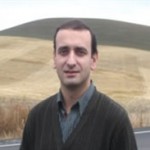New model projects potential bioenergy sorghum production
February 2009
By BLAIR FANNIN, Extension Communications
A simulation model developed by Texas AgriLife Research scientists will aid in predicting bioenergy sorghum crop yields, according to researchers.
Dr. Armen Kemanian, an AgriLife Research scientist at the Texas AgriLife Blackland Research and Extension Center in Temple, leads a team applying the Erosion Policy Integrated Climate (EPIC) model to assess potential yield of biomass sorghum.
The model uses soil, weather and management data to obtain yield estimates.
“One critical issue is to provide a fair assessment of how much biomass can be produced in a particular region,” Kemanian said.
“This production will vary from year to year. In particular, a biomass processing plant will require certain biomass supply to operate and therefore they need an estimate of the supply available and its inter-annual variability (weather changes) in a given area.”
The project applies the EPIC model developed by AgriLife Research scientist Dr. Jimmy Williams. This as well as a sister model, the Agricultural Policy/Environmental eXtender, allows researchers to simulate crop growth and hydrological processes in watersheds.
Processing the input data, the model EPIC can estimate biomass yield, nitrogen and phosphorus extraction and irrigation requirements, as well as nitrogen, phosphorus and temperature stress of biomass sorghum in Texas.

Dr. Armen Kemanian, an AgriLife Research scientist at the Texas AgriLife Blackland Research and Extension Center in Temple, leads a team applying the EPIC model to assess potential yield of biomass sorghum.
For example, the model suggests crops well supplied with nitrogen and water can produce significantly more than 8 tons per acre without major weather events (like hail), he said. In dryland conditions, average yields can be about 50 percent to 60 percent of irrigated crops, but weather variations also can affect yields in the dry regions of the state.
“Of course, the simulations cannot be better than the input data,” he said. “Used with expertise and good judgement, the simulation model gives you good answers quickly and economically when the more desired field experiments are years away from providing hard data.”
The AgriLife Research simulation project is receiving $4 million in state funding as part of the agency’s bioenergy initiative. The results of the project will be available through a Web accessible database.
–Reprinted with permission of Country World Central Texas
